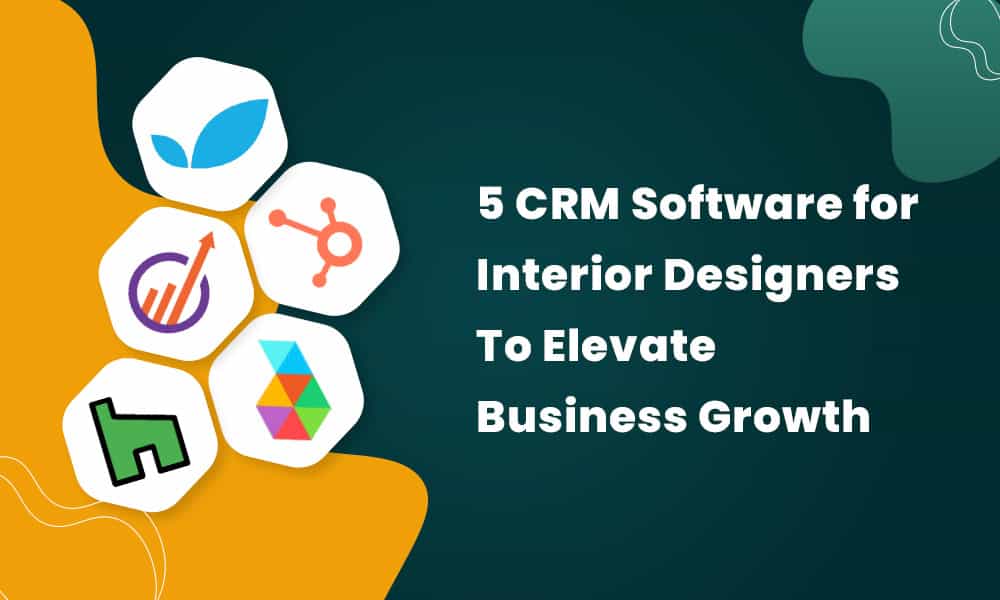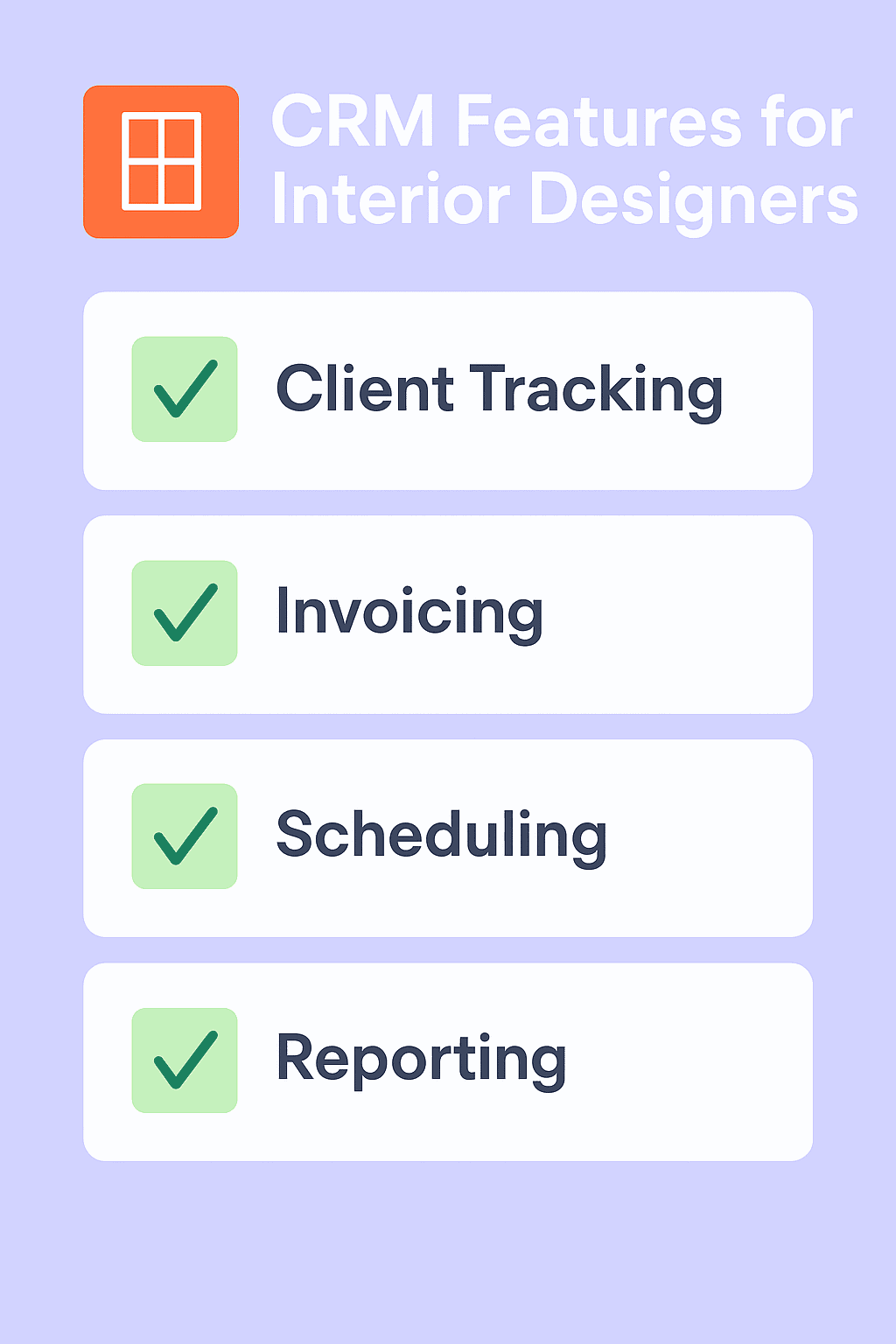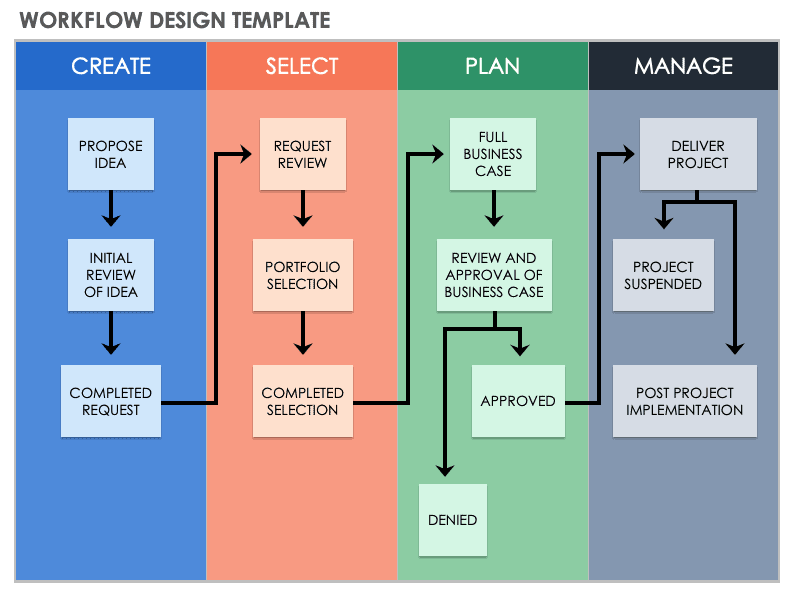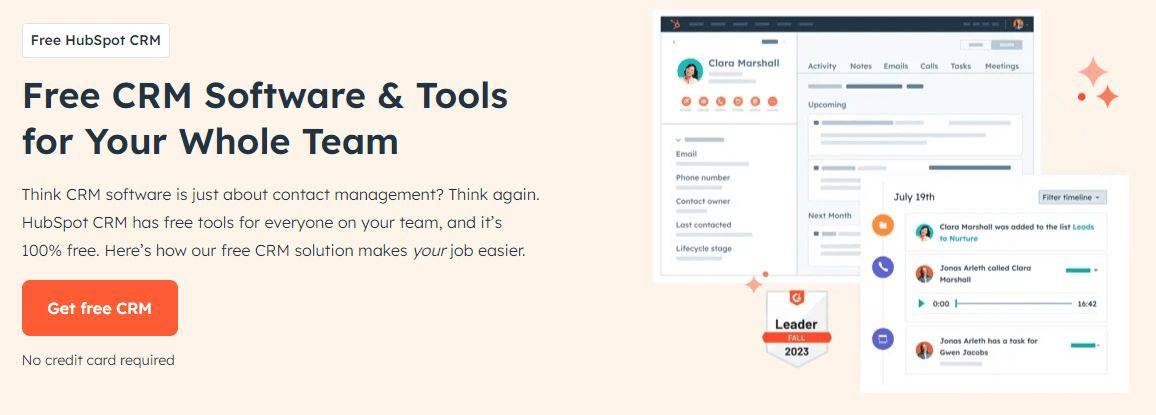One of the major challenges in the interior design business is to keep clients happy.
CRM for interior designers acts as a powerful ally in delivering personalized, memorable service that keeps clients coming back.
However, choosing the right CRM can feel like finding the perfect shade of white paint — daunting, yet critical. In this blog post, we’ll discuss the best CRM software for interior designers, including the features, pros, cons, and pricing.
Whether you’re a solo designer or part of a larger firm, the right interior designer CRM can transform your client relationships and streamline your processes, driving brand growth. So, let’s dive in.
EngageBay CRM Overview
Table of Contents
Top CRM Tools for Interior Designers: A Quick Comparison
Here’s a quick comparison of the leading CRM platforms interior designers use to manage projects and clients effectively:
| CRM Platform | Top Features | Pricing |
|---|---|---|
| Apptivo | • Lead & invoice management• Custom workflows• Integrates with design/accounting tools | Lite: $20/user/moPremium: $30/user/moUltra: $50/user/moEnterprise: Custom |
| EngageBay | • Client profiles & project tracking• Marketing automation• Appointment scheduling | FreeBasic: $12.74/user/moGrowth: $55.24/user/moPro: $101.99/user/mo |
| Dubsado | • Lead capture forms• Automated workflows• Custom templates (contracts, proposals, invoices) | Starter: $20/moPremier: $40/mo |
| Houzz Pro (formerly Ivy) | • 3D floor planner & mood boards• Product sourcing & management• Time tracking & invoicing | Essential: $149/moPro: $249/moEnterprise/Custom: Contact vendor |
| HubSpot | • Contact & deal management• Email marketing & automation• Reporting dashboards | FreeStarter: $45/moProfessional: $800/moEnterprise: $3,200/mo |
Summary Insights:
-
Apptivo offers a solid balance of usability and functionality tailored to interior designers—great for those looking for project and invoice management in one.
-
EngageBay stands out for affordability and a generous free tier, especially useful for beginners or small firms.
-
Dubsado excels in customizability and workflow automation—ideal for creative teams keen on efficiency, though a bit of setup time is required.
-
Houzz Pro caters very specifically to interior designers, offering immersive design tools (3D, mood boards) integrated with CRM workflows.
-
HubSpot shines for marketing-focused studios needing advanced communication and analytics, albeit at a premium.
Understanding CRM for Interior Designers for Project & Client Management
CRM, or customer relationship management, is like your personal assistant in the world of interior design. With CRM, you can streamline communication and manage projects more efficiently, enabling you to deliver that wow factor to your clients.
It keeps track of all your clients’ interactions, preferences, and project details in one platform. This lets you keep everything organized and operate your business smoothly, enhancing customer experience.
Why Interior Designers Need a CRM for Project & Client Management
Let’s dive deeper into the benefits of using a CRM system in the interior design industry — how it can be a game-changer for your business.
Improved client relations
Imagine always hitting the right note with your clients, remembering their preferences, the nuances of their style, and even their favorite color for throw pillows.
A CRM system acts as your external brain, storing all these details, ensuring you provide personalized service that makes each client feel like they are your only client. This level of personalization deepens trust and fosters long-term relationships, resulting in word-of-mouth marketing for your business.
Efficient project management
Interior design projects are complex beasts with a million moving parts. A CRM system helps you keep track of every detail, from initial concepts to final installations.
It streamlines tasks, deadlines, and communication, ensuring you stay on schedule and within budget. This efficiency not only reduces your stress levels but also impresses clients with your ability to deliver seamless project execution.
Enhanced team collaboration
In the design world, collaboration is key. A CRM system breaks down silos, allowing your team to access the same information, whether they’re in the office or on-site.
Everyone stays in the loop, can track progress, and share real-time insights. This cohesive approach not only boosts productivity but also nurtures a collaborative culture that can drive creativity and innovation.
Read also: 9 CRM Tools for Web Designers to Streamline Client Management
Key Features to Look for in a CRM Software for Interior Designers
Searching for the perfect CRM for your interior design business is like looking for a needle in a haystack, right? However, you can easily overcome this challenge by understanding the key features that cater specifically to the needs of interior designers.
Let’s look at the essential features of a CRM that can transform your business operations and client interactions.
Scheduling and appointment setting
Efficiently managing your calendar is crucial in the interior design industry, where appointments, site visits, and client meetings are the norm.
A CRM with robust scheduling and appointment-setting features ensures you always catch up, keeping your projects on track and your clients happy.
It lets you plan your week effortlessly, set reminders for upcoming appointments, and even schedule recurring events, ensuring no two bookings overlap. Moreover, some CRMs integrate with external calendars and send automatic notifications to clients, reducing no-shows and ensuring smooth, timely communications.
Project management tools
Imagine having a command center for each project, where you can see the progress, manage tasks, and keep everything on schedule. That’s what a CRM with dedicated project management tools offers. It allows you to break down projects into manageable tasks, assign them to team members, set deadlines, and track real-time progress.
It’s about having a bird’s eye view while being able to dive deep into the details, ensuring every design element is executed to perfection.
Moreover, this tool facilitates real-time updates and adjustments, ensuring that any changes in the project scope or client requests are promptly addressed.
Client communication
Clear, concise, and timely communication is the backbone of successful interior design projects.
A CRM that provides seamless communication channels, including email, chat, and document sharing, ensures that you, your team, and your clients are always on the same page. It ensures that every message, mood board, and material sample is exchanged in a timely and organized manner, keeping clients engaged and informed throughout the design process.
By prioritizing efficient communication through a CRM, interior designers can elevate the client experience. This helps foster trust and satisfaction, leading to repeat business and glowing referrals.
This strategic approach strengthens the designer-client relationship, laying the foundation for successful interior design endeavors.
Customization and integration
No two design projects are the same, which is why customization in a CRM is non-negotiable. Look for a platform that allows you to tailor fields and workflows to fit your unique process.
A CRM that allows you to customize fields, layouts, and processes ensures that you can adapt it to match your unique design process.
Some platforms also integrate with construction and field service management software, syncing client data with scheduling, work orders, and real-time updates from job sites.
Whether you need to track client preferences, project stages, or supplier information, having the ability to customize these aspects within your CRM empowers you to streamline your workflow and capture the information that matters most to your business.
CRM workflow for interior designers showing client inquiry to project delivery
Additionally, integration capabilities are about breaking down silos and creating a connected ecosystem of tools that work seamlessly together. As an interior designer, you likely use a variety of software and tools to manage different aspects of your business, from design software to accounting tools to social media platforms.
A CRM that offers integration capabilities allows you to sync data across these platforms, eliminating duplicate data entry and ensuring that information flows smoothly between systems.
Read also: 13 Best CRM for Higher Education For 2x Results
Top CRM Platforms for Interior Designers for Project & Client Management
Here are some of the popular interior design CRM options available in the market.
1. Apptivo
Apptivo is one of the best CRM platforms, offering a range of features that are designed to streamline operations and enhance client relationships for interior designers.
Key features
- Lead management: This feature enables interior designers to effectively capture, track, and nurture leads through the sales pipeline, ensuring no opportunity is missed. With detailed tracking and analysis, designers can prioritize leads and strategize follow-ups more effectively.
- Invoice management: The invoice management feature simplifies the billing process, allowing designers to create, send, and manage invoices directly within the platform. This streamlined process ensures timely payments and helps maintain a clear financial overview of projects.
- Customized workflow: With Apptivo, interior designers can customize workflows to match their project management style and business processes. This flexibility ensures that every project step is aligned with the firm’s specific operational needs, enhancing efficiency and productivity.
- Integration capabilities: Seamlessly integrate with other tools and software commonly used in the interior design industry, such as design software and accounting tools.
Pros
- User-friendly interface
- Robust project management features
Cons
- Learning curve for complex setups
Pricing
Apptivo offers flexible pricing plans starting from $20 per user per month, with higher-tier plans offering more advanced features and customization options.
- Lite: $20 per user per month
- Premium: $30 per user per month
- Ultra: $50 per user per month
- Enterprise: Custom
2. EngageBay
EngageBay is a robust CRM platform that offers an all-in-one solution for managing your interior design business. It seamlessly combines customer relationship management with marketing automation, sales boost, and customer support functionalities.
Key features
- Client management: EngageBay allows interior designers to keep detailed profiles of their clients, including preferences, past projects, and communication history, ensuring personalized service and seamless experience.
- Project tracking: With its project management tools, designers can track project progress, manage tasks and deadlines, and collaborate with team members in real-time.
- Marketing automation: EngageBay supports email marketing campaigns, social media management, and targeted marketing automation, helping designers attract new clients and retain existing ones.
- Appointment scheduling: An integrated scheduling feature makes booking client meetings, consultations, and follow-ups within the platform easy.
Pros
- User-friendly interface that makes navigation and operation straightforward
- Affordable pricing compared to other CRM platforms
- 100s of amazing free email templates
Cons
- Advanced features and customization are only available in paid plans
Pricing
EngageBay offers a free plan with basic features, which is great for startups and small firms.
- Free
- Basic: $12.74 per user per month
- Growth: $55.24 per user per month
- Pro: $101.99 per user per month
Read also: The Best Free CRM Apps, By Category (with User Reviews)
3. Dubsado
Dubsado has a dedicated CRM platform designed to cater to the needs of creatives, including interior designers. It offers a wide array of features to streamline client interactions, automate workflows, and manage projects efficiently, all in one intuitive interface.
Key features
- Lead capture: Allows interior designers to seamlessly embed contact forms into their websites or social media pages, automatically funneling potential client information directly into their CRM system.
- Automated workflows: Automates repetitive tasks such as sending emails, invoices, and contracts, saving valuable time and ensuring a consistent client experience.
- Project tracking: Offers tools to track project progress, deadlines, and deliverables, keeping projects on schedule and within budget.
- Customizable templates: Provides various templates for contracts, proposals, and invoices, allowing designers to maintain brand consistency across all client communications.
Pros
- Extensive customization options
- Automation features streamline various administrative tasks
Cons
- Can have a steep learning curve for users new to CRM systems
Pricing
Dubsado offers a tiered pricing model starting with a free trial for up to three clients. The full-featured version is priced at a monthly subscription.
- Starter: $20 per month
- Premier: $40 per month
Read also: CRM Tools for Architecture Firm in 2025
4. Houzz Pro
Houzz Pro, formerly known as Ivy, is a comprehensive CRM and project management tool specifically designed for interior designers. It offers a suite of features to streamline project workflows, enhance client engagement, and foster business growth.
Key features
- 3D floor planner: Allows designers to create detailed 3D floor plans, elevations, and renderings to visualize projects and share with clients.
- Mood boards: Enables the creation of mood boards to compile and present design ideas, facilitating clear communication of design concepts to clients.
- Product sourcing and management: Integrates a vast library of products and materials, making it easier to source items and manage orders directly within the platform.
- Time tracking and invoicing: Features built-in time tracking and invoicing tools, streamlining the billing process and ensuring accurate financial management.
Pros
- Easy and simple interface
- Helpful in generating business
Cons
- Some users have faced spam encounters and a drop in lead generation
Pricing
Houzz Pro offers tiered pricing plans designed specifically for design professionals, starting at $149 per month, with higher-tier plans adding advanced features and customization options.
-
Essential: $149 per month
-
Pro: $249 per month
-
Enterprise/Custom: Contact vendor for tailored pricing
5. HubSpot
HubSpot is a popular CRM for interior designs that offers free plans, making it an attractive option for small to medium-sized design studios looking to streamline their operations and enhance their marketing efforts.
Key features
- Contact and deal management: Easily organize, track, and grow your contact list and sales pipeline, allowing for a more personalized approach to your interior design projects.
- Email marketing and automation: HubSpot’s email marketing tools enable you to create, customize, and automate email campaigns to nurture leads and keep clients engaged.
- Reporting dashboards: Gain valuable insights into your business performance with customizable reporting dashboards that track sales, marketing, and customer service metrics.
- Inbound marketing tools: Utilize powerful inbound marketing tools to attract new clients, convert leads, and close deals by leveraging content that speaks directly to your target audience’s needs and interests.
Pros
- Comprehensive and user-friendly interface
- Strong emphasis on inbound marketing, helping to attract and retain clients
Cons
- Advanced features and additional tools can become quite expensive.
Pricing
HubSpot offers a free plan with basic CRM features. For access to more advanced features, their paid plans are as following:
- Starter: $45 per month
- Professional: $800 per month
- Enterprise: $3,200 per month
EngageBay Automation Features
Read also: 14 Surprisingly Affordable HubSpot Alternatives
Implementing CRM in Your Interior Design Business
Integrating CRM into your interior design business can revolutionize how you manage projects, communicate with clients, and streamline operations. But where do you start?
Let’s break it down into actionable steps and best practices to ensure a smooth implementation process.
Steps for choosing the right CRM
Choosing the right CRM for your interior design business is a critical decision that can significantly impact your operations and client satisfaction. Here are some steps to help you make a decision.
Assess your business size
Consider the size of your interior design business — are you a solo designer, a small team, or a large firm? The scalability and features of the CRM should align with the size and complexity of your business operations.
Identify your needs
Evaluate your specific requirements and challenges in interior design.
Are you looking to streamline client communication, project management, lead tracking, or all of the above? Make a list of essential features and functionalities that you need in a CRM to address these challenges effectively.
Consider customization
Interior design projects vary widely, so you need a CRM that can adapt to your unique workflows and processes. Look for a CRM that offers workflow customization options, allowing you to tailor fields, layouts, and processes to match your specific requirements.
Evaluate integration capabilities
Integration with other tools and software used in the interior design industry is essential for seamless workflow management.
Ensure that the CRM you choose can integrate with design software, accounting tools, communication platforms, and other systems you use in your business.
Assess cost and scalability
Consider the cost of implementing and maintaining the CRM, including subscription fees, setup costs, and any additional expenses for customization or integrations.
It should align with your budget. Also, make sure to choose a solution that offers scalability, allowing you to add or remove features as your business grows.
Seek user feedback and review
Research user reviews and testimonials to gauge the user experience and satisfaction with different CRM platforms.
Pay attention to reviews from other interior designers to get insights into how well each CRM meets the specific industry needs.
Read also: Enhance Manufacturing Operations with CRM: Insights, Reports, and Solutions
Best practices for onboarding your team
Transitioning to a new CRM can be daunting for your team, but with the right approach, it can become a seamless part of your workflow.
Here are some best practices to help you through this process.
Step 1: Communicate the benefits
People are often resistant to change, but one thing we know for certain — change is inevitable. So, how do you solve this challenge?
Start by clearly communicating the benefits of adopting the new CRM system to your team.
Emphasize how it will improve collaboration, streamline processes, and enhance client satisfaction.
Address any concerns or resistance by highlighting its positive impact on their daily tasks and overall efficiency.
Step 2: Provide comprehensive training
Once they know the benefits of the transition, provide your team with training sessions to help them familiarize themselves with the new CRM system.
Tailor the training to each team member’s role and responsibilities, focusing on key features and functionalities relevant to their tasks.
Provide hands-on practice and encourage questions to ensure everyone feels confident using the CRM.
Step 3: Designate champions
This is very important — assigning dedicated “champions” or power users within your team who are proficient in using the CRM system.
These champions can serve as mentors and resources for their colleagues, providing support, answering questions, and sharing best practices to facilitate adoption.
Step 4: Encourage feedback and participation
If you want your team’s cooperation, the best way is to make them feel included.
You can do so by actively encouraging participation and feedback from your team throughout the onboarding process.
Create an open and inclusive environment where team members feel comfortable expressing their thoughts, concerns, and suggestions for improvement.
Incorporate their feedback to address any challenges and refine the CRM implementation strategy.
Step 5: Gradual integration and ongoing support
Integrate the new CRM system into your existing workflow gradually to minimize disruption and facilitate a smooth transition.
Start by identifying low-impact areas or pilot projects where you can test the CRM’s functionality and gather user feedback.
Gradually expand the use of the CRM across different departments and projects as your team becomes more comfortable with the system.
Also, don’t forget to check in with your team to address any concerns regularly, provide additional training as needed, and ensure that the CRM is meeting their needs effectively.
Read also: The Key Features of Business Management Software Explained
Use Case Story: How Falkbuilt Scaled Its Interior Construction Business with CRM
Imagine running a design firm where projects, client details, and team workflows are scattered across emails, spreadsheets, and sticky notes—juggling all that is a recipe for chaos. That was the reality at Falkbuilt, a growing interior construction company.
By implementing a CRM built for designers, Falkbuilt transformed its operations:
-
They centralized client preferences, project histories, and communication logs so each project felt personal and streamlined.
-
Teams across locations stayed synced—tracking project progress, deadlines, and client communication in one platform.
-
The result? They scaled efficiently and captured $1.3 million in interior construction project revenue rapidly, thanks to improved workflow clarity and collaboration.
Falkbuilt witnessed exponential revenue growth, reaching $1.3 million in interior construction project revenue from a standing start.
The platform’s efficiency and collaboration features empowered Falkbuilt to streamline workflows, track progress, and foster communication among distributed teams, positioning them as a leader in the interior construction industry.
Read also: 13 Fantastic CRM for Freelancers to Improve Client Relations
Wrapping Up
The success story of Falkbuilt exemplifies the transformative power of effective customer relationship management tools. By embracing technology, Falkbuilt was able to achieve remarkable revenue growth. You can do the same for your business.
As the interior design industry evolves and demand increases, investing in a robust CRM solution will help you get closer to your success.
By centralizing client data, streamlining project management processes, and fostering collaboration among team members, CRM platforms enable interior designers to deliver exceptional results while maximizing efficiency and client satisfaction.
For firms seeking comprehensive management solutions, EngageBay offers a suite of tools tailored to meet the unique needs of interior design companies. Sign up for EngageBay today and take your firm’s management capabilities to the next level.
Ready to simplify your interior design workflow? Try EngageBay CRM for free and discover how it transforms client and project management.
A CRM for interior designers centralizes client data, project history, and communication in one place—streamlining workflows and enabling tailored service that turns satisfied clients into repeat business.
With CRM for interior designers, you can automate reminders for proposals, appointments, and payments—ensuring no deadlines are missed and every client interaction feels timely and personalized.
Yes—a specialized CRM for interior designers allows visual pipelines that track leads from inquiry to onboarding, helping prioritize high-value prospects and streamline the sales process.
Absolutely. Many interior designers successfully use project management tools as a CRM—tracking clients, tasks, and sales stages in one flexible platform designed around their workflow.
A CRM for interior designers ensures that every team member has access to client updates, project notes, and next steps—enhancing accountability and ensuring seamless handoffs throughout the design process.






